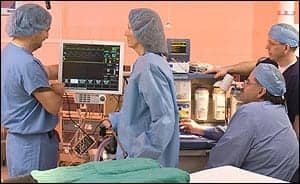Researchers used a Helo F2 device to test how well UV light could inactivate the virus that causes COVID-19 on different types of surfaces, the results of which could help guide healthcare facilities in how to improve patient and personnel safety during the pandemic, reports News Medical.
In a paper published in the bioRxiv preprint server, researchers from Georgia State University report the efficacy of UV light on inactivating SARS-CoV-2 on different surfaces.
They found that an exposure time of 5 minutes (17.2 mJ/cm2) could reduce the virus counts by 3-log10 fold on the hard non-porous surfaces, glass, stainless steel, and plastic. Doubling the exposure time reduced the virus levels to nearly undetectable levels on glass and plastic, while stainless steel required 15 minutes of exposure.
For the N95 respirator material, 15 minutes of exposure reduced the virus counts 2.86-log10 fold. A 30-minute exposure was required to reduce virus levels to undetectable levels. The higher time required is likely due to the porous and multilayer structure of the material.
Read more at News Medical.




